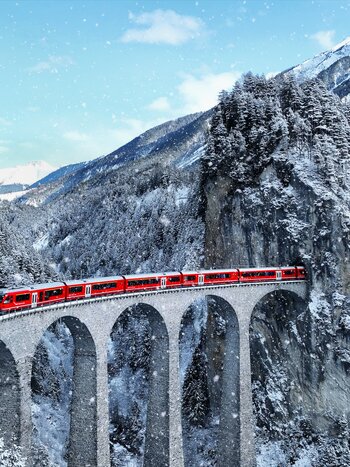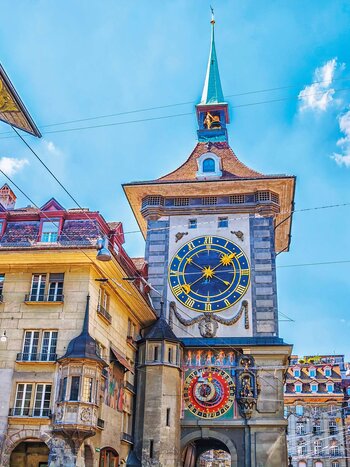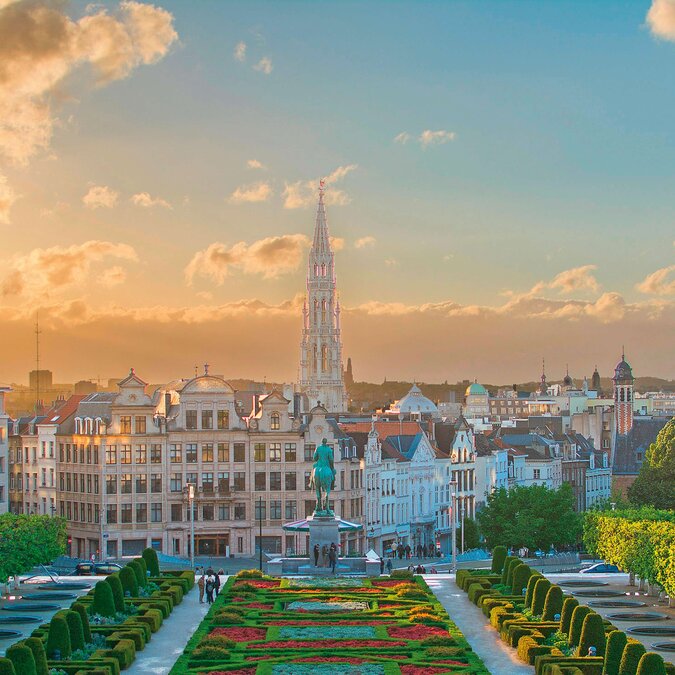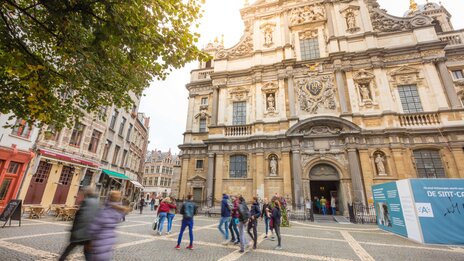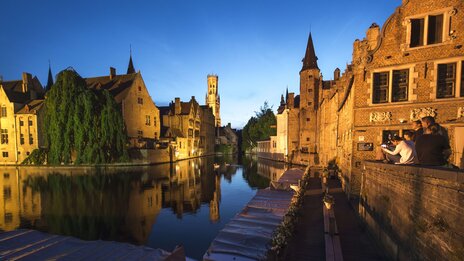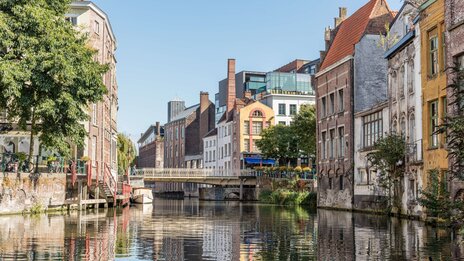Highlights
-
The sight of Brussels' market square, the Grote Markt/Grand Place, with its monumental town hall and centuries-old guild houses with their golden and decorative sculptures, is considered one of the most beautiful in the world and leaves you speechless. You immediately understand why UNESCO recognises this square in its entirety as a World Heritage Site. A few minutes away is the small statue of ‘Maneke Pis’, one of Brussels' most famous ambassadors, who often wears an appropriate costume on special days.
-
The most famous landmark in Brussels can be reached by underground: the 102 metre high Atomium, a remnant of the 1958 World Exhibition, which houses one of the longest escalators in Europe, various artistic installations and a restaurant with a breathtaking view.
-
With the headquarters of the European Union, headquarters of NATO and other EU institutions, Brussels is not only the capital of European politics, but also the capital of European life - it is one of the most multicultural metropolises in Europe.
-
Brussels offers architectural grandeur and, above all, Art Nouveau at its finest, as in Elsene and Sint-Gillis, two of the 19 Brussels municipalities. In addition to the Horta House - Victor Horta was an important co-founder of Art Nouveau - there are numerous other magnificent buildings along an architectural walk.
-
Located below the colossal Palace of Justice, this is the former oldest working-class neighbourhood in Brussels. Today it is an antiques and flea market district - a dream for anyone who loves to browse endlessly through old shops and vintage boutiques. The centrepiece of the Marollen is the flea market on Vossenplein, which is well worth a visit.
-
Brussels is not only the capital of Belgium, but also of Lambiek: a complex, sour beer that forms the basis of the Geuze and Kirsch beers that are so typical of Brussels and the surrounding area. The Cantillon family brewery has hardly changed since 1900 and is well worth a visit.
-
From Zurich, Basel, or Geneva, you can usually reach Brussels by train in about 6 to 7 hours.
Direct connections or a single transfer – often in Cologne – make for a relatively straightforward trip to the heart of Belgium. Rail travel offers a comfortable alternative to flying or driving and gets you to the European capital stress-free. Alternatively, you can plan your journey via Paris and add a stopover in the City of Love.
With the Twiliner night bus, you’ll enjoy a convenient overnight ride from Switzerland to Brussels.


